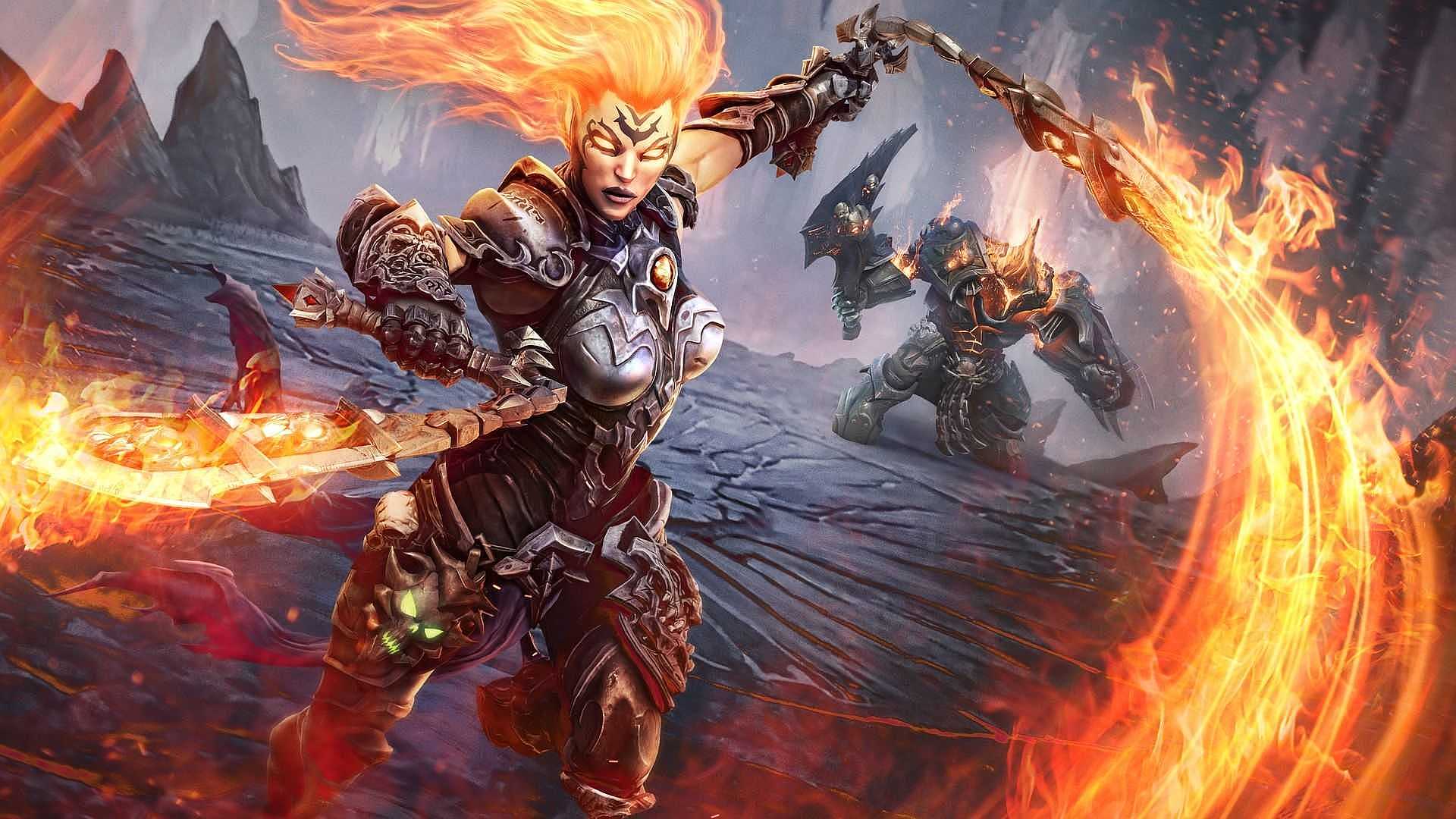I can’t believe I’m actually typing this, but after enduring one of the most tumultuous rides in development history, Darksiders 3 is finally here.
Initially developed by Vigil Games, and originally envisioned as a co-op RPG starring all four horsemen of the apocalypse, financial turmoil within the developer’s parent company put the project at a standstill for five years as it struggled to find a new home. Miraculously, it came back in 2017 sporting a new developer, a new character in the horseman Fury, and seemingly, a different direction than what was announced years prior. Excitement aside, two things were clear from the reveal: Instead of being co-op, the game was single player, and instead of more over-the-top hack and slash gameplay, the combat seemed
So the real question is, with a new team, new publisher, and new lease on creativity, did they succeed in bringing Darksiders back?
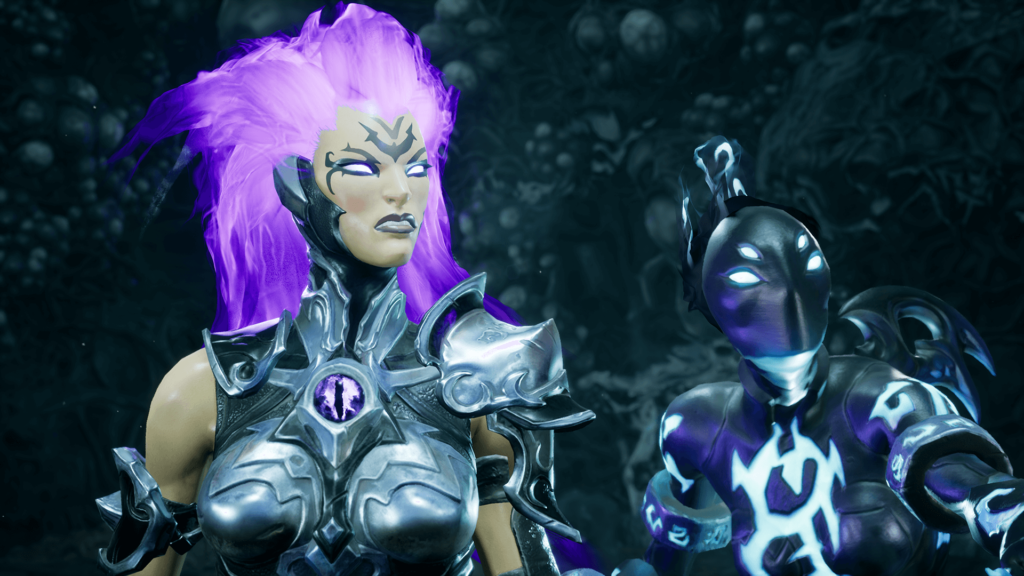
Well… I’ll
Like previous titles in the series, not a single load screen is wasted before the lore gears begin turning. The game tells the story of Fury, who at the command of the ever enigmatic Charred Council, must track down the rogue Seven Deadly Sins in the midst of an apocalypse on Earth, all while a war between Heaven/Hell threatens to upset the balance of all things. The story, like previous games in the series, seems to be happening in parallel, with numerous callbacks and cameos from War and Death’s games that fans will recognize, and all-new characters that players will soon endear themselves to.
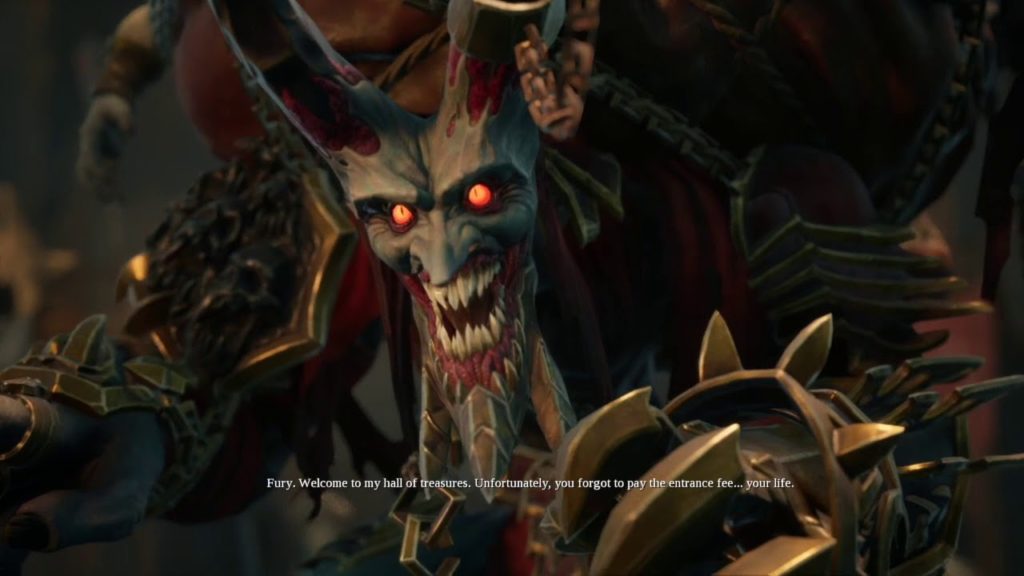
Darksiders has had its share of unique characters throughout the years, and this installment is no different, but it’s clear that this time that the Seven Deadly Sins are the stars of the show. Each have personalities and looks that wholly reflect their titles to a tee, and each encounter is memorable, not solely because of the challenge they provide, but on a storytelling level, since they also act as a mirror for Fury to examine herself, and grow as a character. Where War was duped into a bloody redemptive arc, and Death was being pulled around by forces he couldn’t quite understand, there was never a feeling of growth within either of them the way there is in Fury, and for a character that could’ve EASILY been one note, I can appreciate the effort in making her feel like anything but.
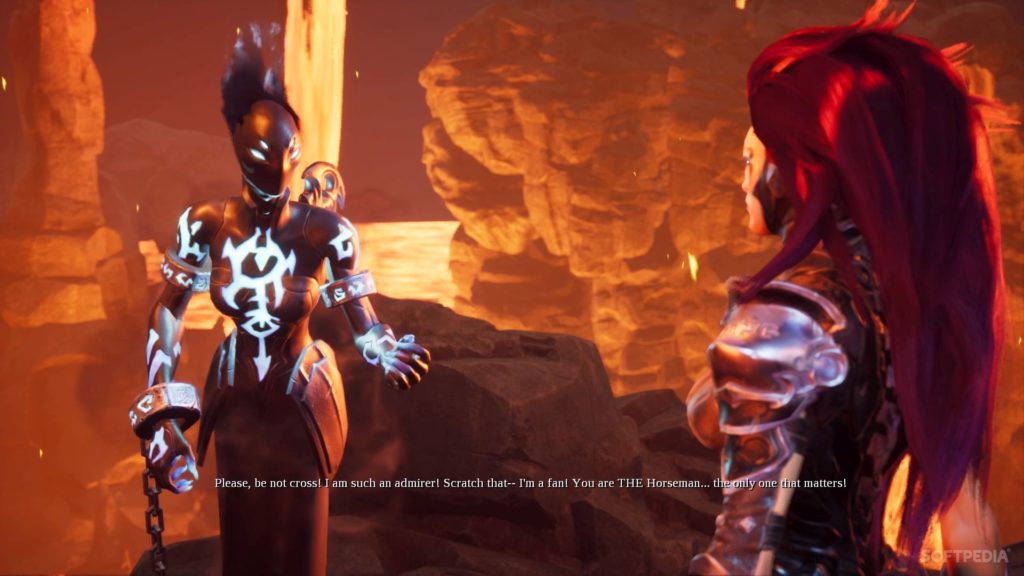
Along with said strong story beats, Darksiders has traditionally been a series that manages to entertain through a combination of slick art direction and tight hack-and-slash mechanics, all while boldly wearing its influences on its sleeve. Darksiders 3 is no different in terms of ambition, but something might’ve been lost in translation this time. The backdrop of a post-apocalyptic Earth is strong, with a dystopian, ruined aesthetic similar to the original Darksiders. But while the map is split into five visually distinct areas ranging from dilapidated city streets, ancient temples, underwater caverns, and abandoned factories, they all feel eerily similar at a gameplay level. Fury doesn’t have the ability to parkour her way around the levels similar to Death. Instead, she has a very basic moveset consisting of a double jump, the ability to swing with her combat whip, and additional moves brought on by weapons you acquire over the course of the game. This can be a bit of a mixed bag.
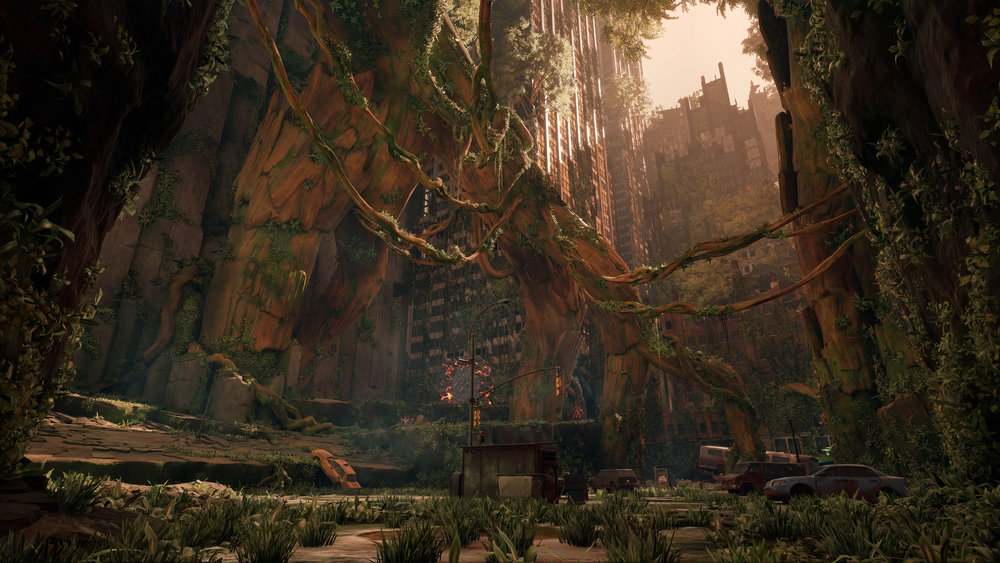
Though the design seems open because of the lush backdrops, navigating the environments themselves feels eerily box-like and restrictive, with many areas inaccessible until you’ve acquired the aforementioned new weapons. While I’m not opposed to a more Metroidvania-influenced style of progression where you’ll encounter areas you simply can’t reach until later, the scope is constantly undermined by this, and due to the deliberate timing with which Fury acquires new abilities, the end result feels restrictive instead of tantalizing. The overworld map from Darksiders 2 has also taken
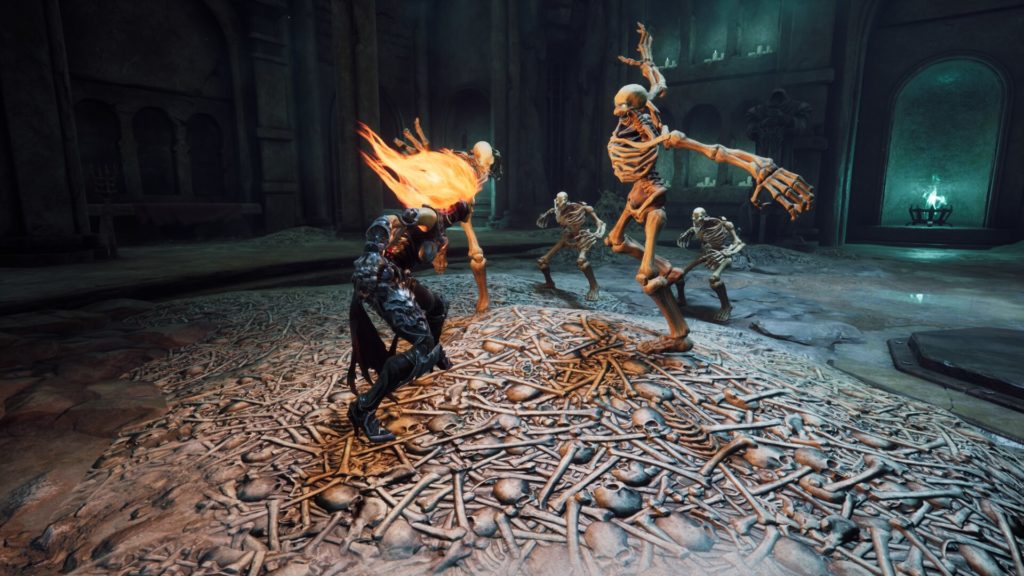
The identity crisis continues when you arrive at the other pillar of the game’s structure–the combat. Darksiders as a series has never been a slouch in this regard, and the game has always achieved a bit of a middle ground between twitch satisfaction and visceral visual feedback to make for a fun experience. Here, you almost get that, but it comes with several caveats. The combat has been slowed down considerably from previous games, going from a mob brawler on steroids to a more deliberate system that rewards patience, and well-timed dodging in 1-on-1 encounters.
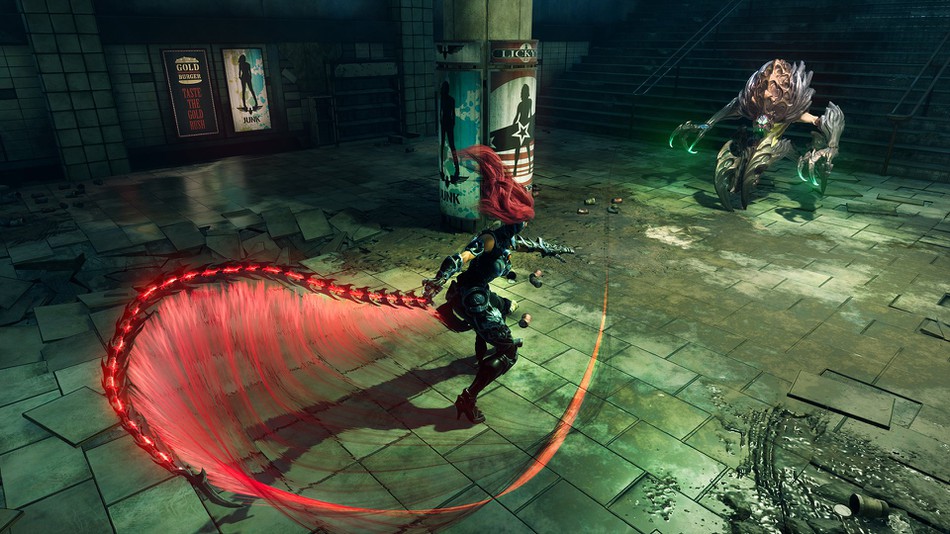
There’s a sense that Gunfire Games wanted to mature their combat engine by making it more deliberate and simple, but the reality is that while doing this, they still kept the large mobs of enemies from previous games as part of their design for this one. This creates a conflict of interest that is strongly felt during hectic moments, as the camera and
Bafflingly, (and this is certainly a personal gripe) moves that always prove necessary in a 3D hack-and-slash, such as an air carry, or area-of-effect move are inexplicably tied to the counter system in a way that all but ensures you’ll rarely access them. I may be in the minority, but when you’re attempting to manage five enemies at once, the nuances of their attack animations are even less a priority as the screen threatens to turn into a virtual soup of arms, legs, and stylized motion blurs. The combat wants to be deliberate, skillful even, but it’s so busy trying to overwhelm you that fighting minions
In fact, because of their individually unique presentation, strong thematic tie-ins, and the fact that the entire mission is based around the Sins, one wouldn’t be at fault if they occasionally felt like they were playing a post-apocalyptic Shadow of the Colossus. With block puzzles.
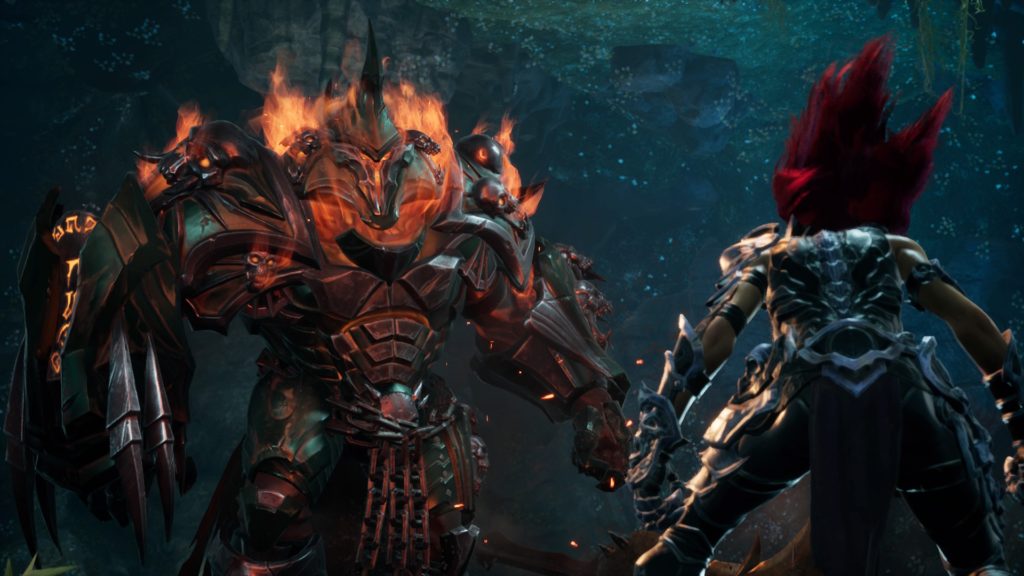
I know this may sound overly negative, but I have to stress that Darksiders 3 is not necessarily a bad game because of the issues it has. The problem is that Gunfire Games may have wanted to have their cake and eat it too, and it becomes increasingly difficult to ignore the longer you engage with this 15+hour adventure. The game’s design suggests a conflict between intent and implementation. It’s clear that they want Darksiders 3 to be their take on Dark Souls, but Gunfire Games doesn’t seem to have a fundamental understanding of why trying to simultaneously make a Dark Souls and Darksiders game at the same time wouldn’t exactly work. What you’re left with is a game that is entirely playable, that wants to endear itself to you at every turn, and does sporadically, but it just can’t seem to get out of its own way.
“…For a game supposedly about Fury, I spent most of my time wishing for Death. “
There’s a lesson to be learned here: Cherry picking design elements doesn’t work when you don’t fully recognize the reasons they were implemented in the first place. Dark Souls has an open world that is free to be explored at your own pace because the mechanics you start with are all you need to explore the entire game, start to finish. Darksiders 3 wants to have the same type of open world, but at the same time restricts parts of the environment for hours, so the game ends up feeling linear. The game wants to have more deliberate combat, with a stripped back move list and enemy tells that lend itself to a counter/strike rhythm, but also wants to be a hack-and-slash that throws mobs of enemies at you. It wants the world to look open and malleable, but the interactions between Fury and the environment, whether solving some (admittedly clever) puzzles or trying to explore, simply punish you for attempting to go off script for even a second.
Ideas like these are constantly confronting each other every step of the way, and more often than not, it’s
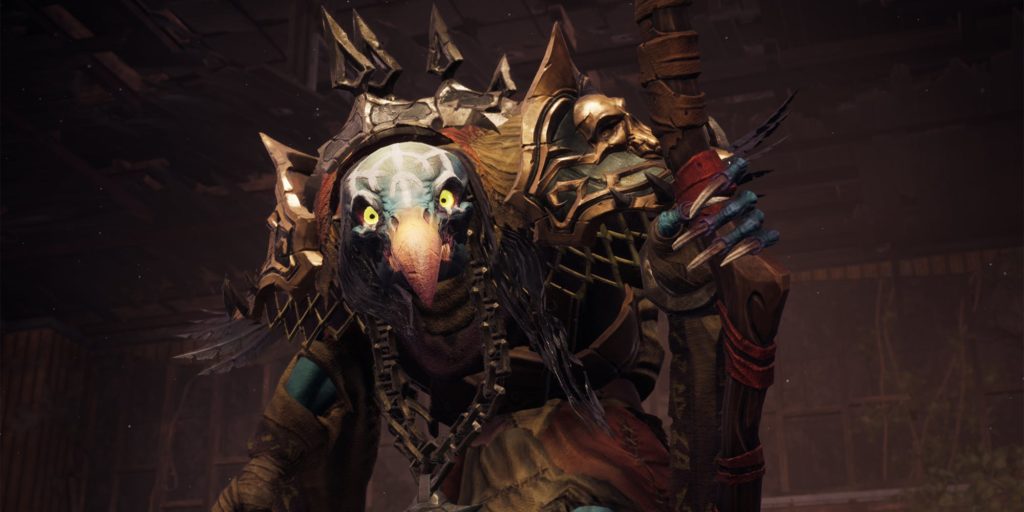
That, for better or worse, is Darksiders 3 in a nutshell. An endearing, enjoyable, yet flawed game that does just enough to avoid being a disaster, but not enough to be exceptional or even outdo the games that came before it. Given the game’s tumultuous development cycle and all the hands it must’ve passed through over the years, I consider it a Christmas miracle we
The foundation of Darksiders is quite solid, and it speaks to the strength of the world building and core fundamentals that I was fully invested, even as the game was threatening to snap under the weight of its greater ambitions. Hopefully, with a less drama-filled development cycle, and the opportunity to really look at where the genre has gone in Gunfire’s absence will result in a more cohesive title next time.
(Since the game launch, Darksiders 3 been updated twice, altering fundamental mechanics of the combat, leveling, and in-game economy. As the changes weren’t significant enough to alter any judgments made in the actual article, This review reflects the launch product.)

